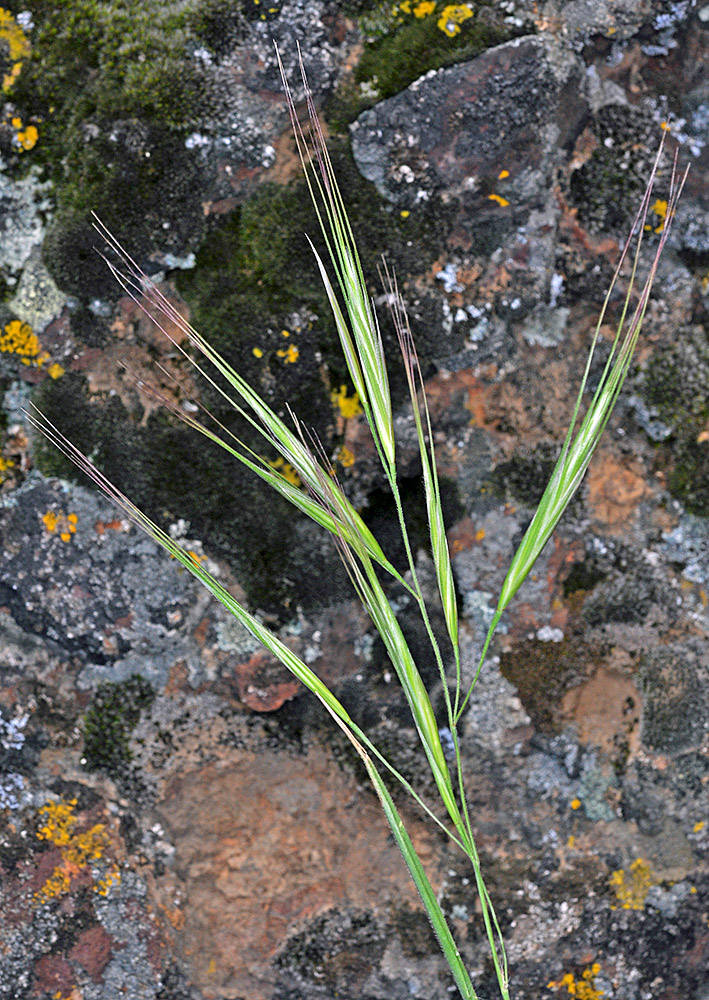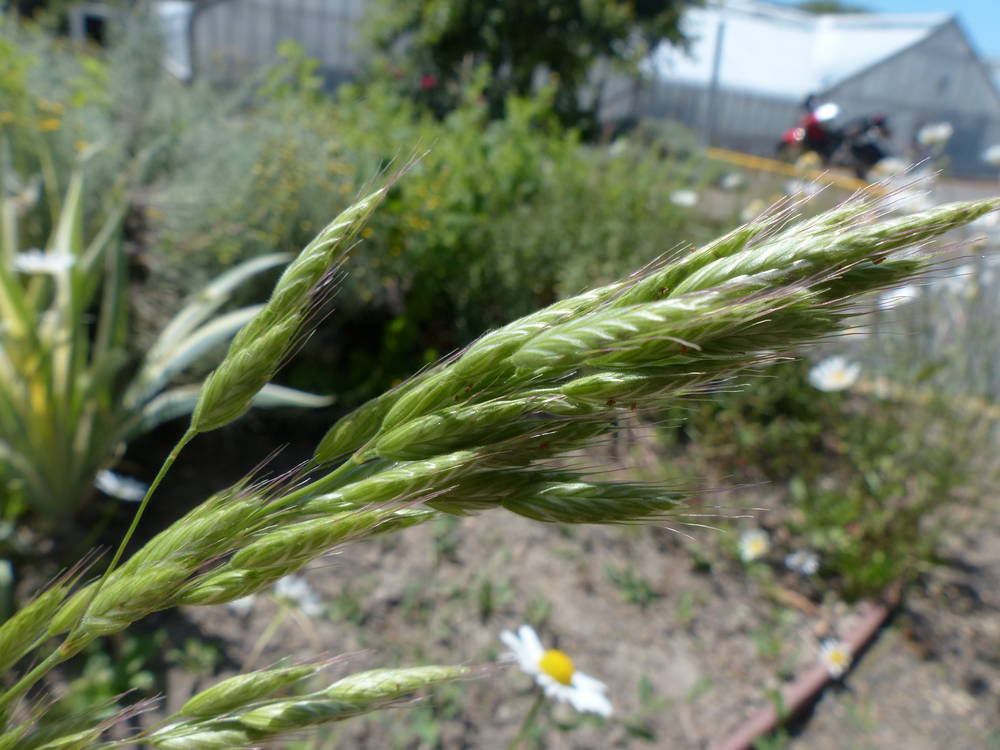Bromus diandrus
Bromus hordeaceus
ripgut brome
soft chess
puberulent.
sheaths softly pilose, often with retrorse or spreading hairs;
blades 3.5–27 cm × 1–9 mm, pilose on both surfaces.
lower sheaths densely pilose; upper sheaths pubescent or glabrous;
blades 2–19 cm × 1–4 mm;
lower surfaces glabrous or pubescent;
upper surfaces pubescent.
panicles 13–25 × 2–17 cm, nodding at maturity but occasionally erect;
branches 1–7 cm, stiffly erect to ascending or spreading, 1–2 spikelets.
1–13 × 1–4 cm; erect, usually ovoid; open at anthesis, becoming contracted and dense, occasionally reduced to 1 or 2 spikelets;
branches usually shorter than the spikelets, ascending to erect; straight or nearly straight.
25–70 mm, moderately laterally compressed, with 4–11 florets.
(11)14–20(23)mm, lanceolate; terete to moderately laterally compressed, 5–10 florets;
floret bases usually concealed at maturity;
rachilla internodes concealed at maturity.
smooth or scabrous;
lower glumes 15– 25 mm, 1–3-veined;
upper glumes 25–35 mm, 3–5-veined.
pilose to glabrous;
lower glumes 5–7 mm, 3–5-veined;
upper glumes 6.5–8 mm, 5–7-veined.
equal to or shorter than paleas; thin, weakly inrolled to flat.
22–30 mm, linear-lanceolate, scabrous, 7-veined;
margins hyaline;
tips acuminate; bifid;
teeth 3–5 mm, awned;
lemma awns 30–65 mm; straight.
6.5–11 × 3–5 mm, lanceolate, chartaceous, antrorsely pilose to pubescent, occasionally glabrous near the base or throughout, 7–9-veined; hyaline margins abruptly or bluntly angled, not inrolled at maturity;
lateral veins prominent, thickened and raised;
tips rounded to acute; bifid;
teeth shorter than 1 mm;
lemma awns 6–8 mm, usually arising less than 1.5 mm below the lemma tips; straight to recurved at maturity.
0.5–1 mm.
0.6–1.5(2)mm.
=28, 42, 56.
=28.
Bromus diandrus
Bromus hordeaceus
Disturbed open areas, degraded grasslands. 0–1300m. Col, CR, ECas, Est, Lava, Sisk, WV. CA, ID, NV, WA; north to British Columbia, southeast to TX, south to Mexico, scattered in the eastern US; Europe. Exotic.
Bromus diandrus is a common weed, typically with gracefully curved inflorescences and long lemma awns. The long awns can lodge in the mouths and digestive tracts of herbivores, causing injury. Similar B. sterilis is smaller in all its parts.
Disturbed areas, degraded grasslands. 0–1900m. All ecoregions except BR. CA, ID, NV, WA; north to AK, south to Mexico, east to Newfoundland and SC; North Africa, southern Europe; scattered elsewhere worldwide. Exotic.
Bromus hordeaceus has been divided into subspecies, two of which may occur in Oregon (B. h. ssp. hordeaceus and B. h. ssp. pseudothominei). Most Oregon specimens, however, cannot be identified confidently to either subspecies.
Barbara Wilson, Richard Brainerd, Nick Otting
Barbara Wilson, Richard Brainerd, Nick Otting
- Local floras:
CA,
OR,
WA
- Local Web sites:
CalFlora,
CalPhotos,
Flora NW,
PNW Herbaria
WildflowerSearch
iNaturalist (observations)
USDA Plants Database
- LBJ Wildflower Center
- SEINet
- Plants of the World Online
- Encyclopedia of Life
- Wikipedia
- Google Image Search
- Local floras:
BC,
CA,
OR,
WA
- Local Web sites:
CalFlora,
CalPhotos,
Flora NW,
PNW Herbaria
WildflowerSearch
iNaturalist (observations)
USDA Plants Database
- LBJ Wildflower Center
- SEINet
- Plants of the World Online
- Encyclopedia of Life
- Wikipedia
- Google Image Search





